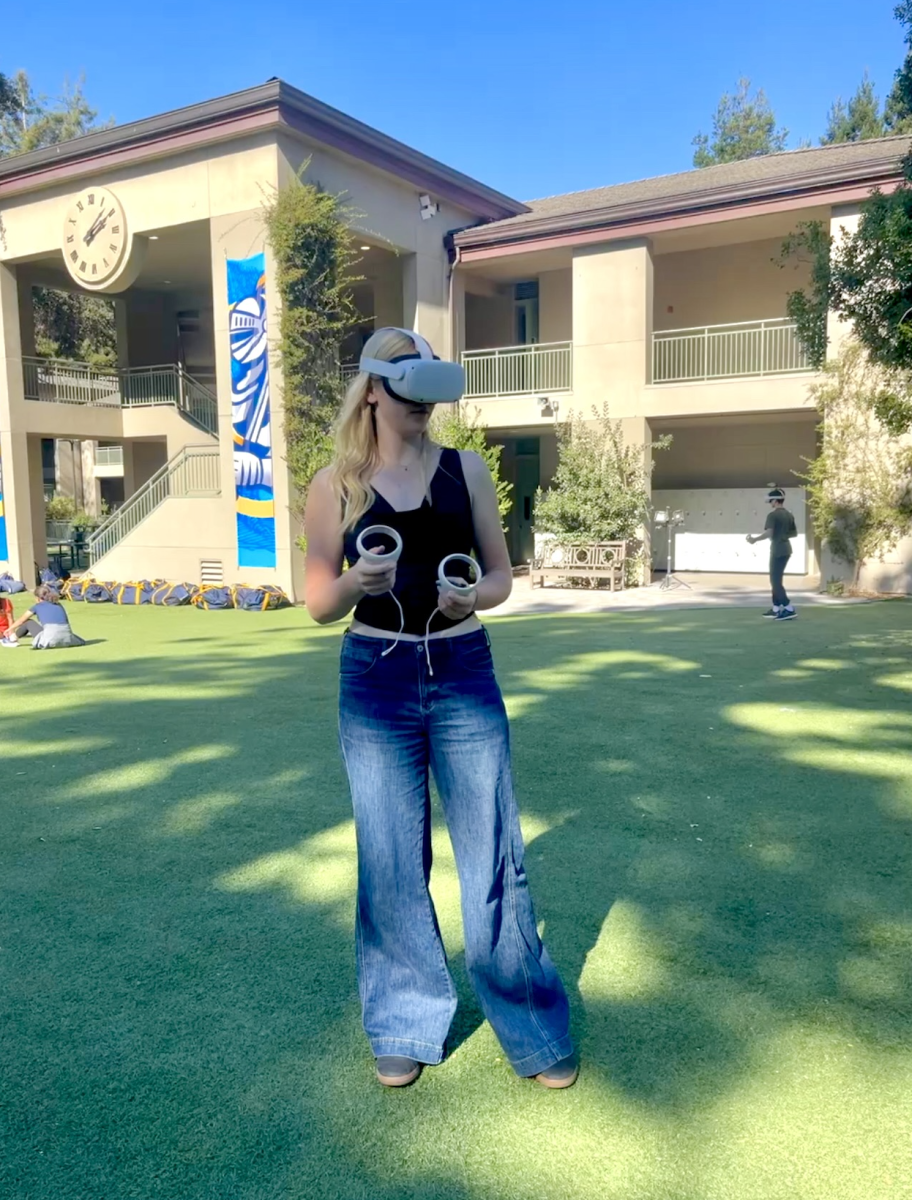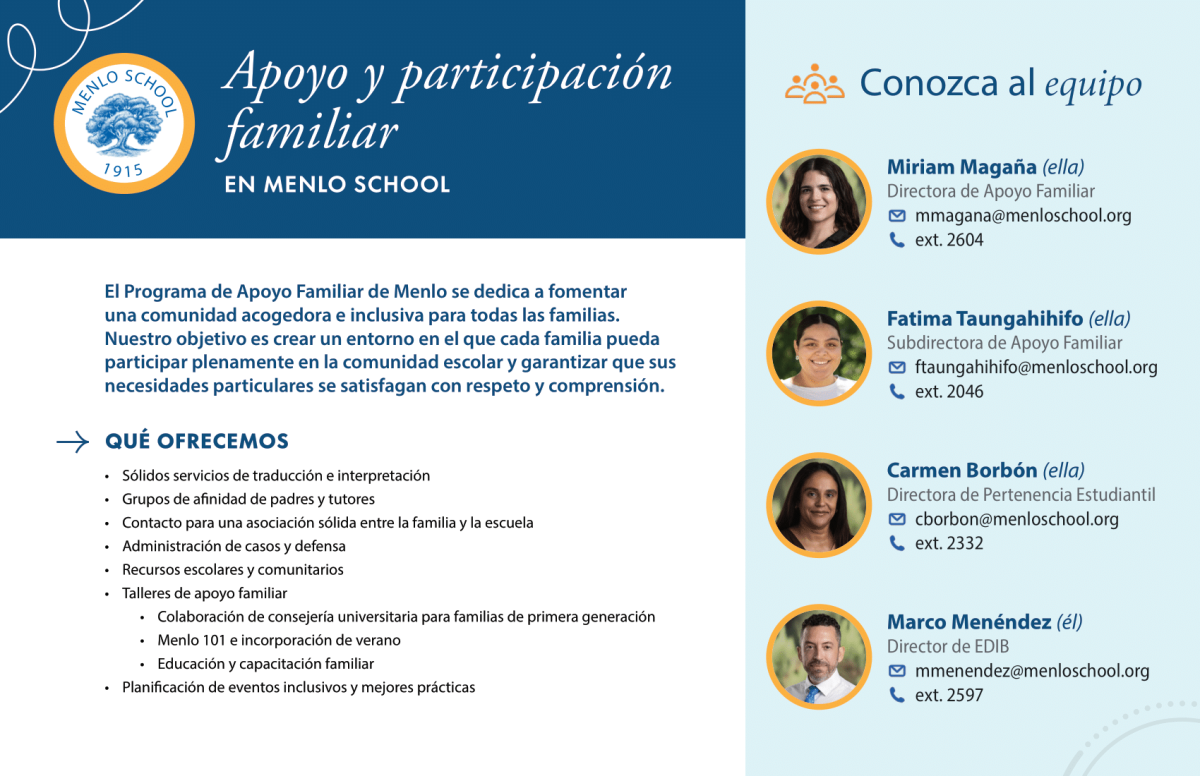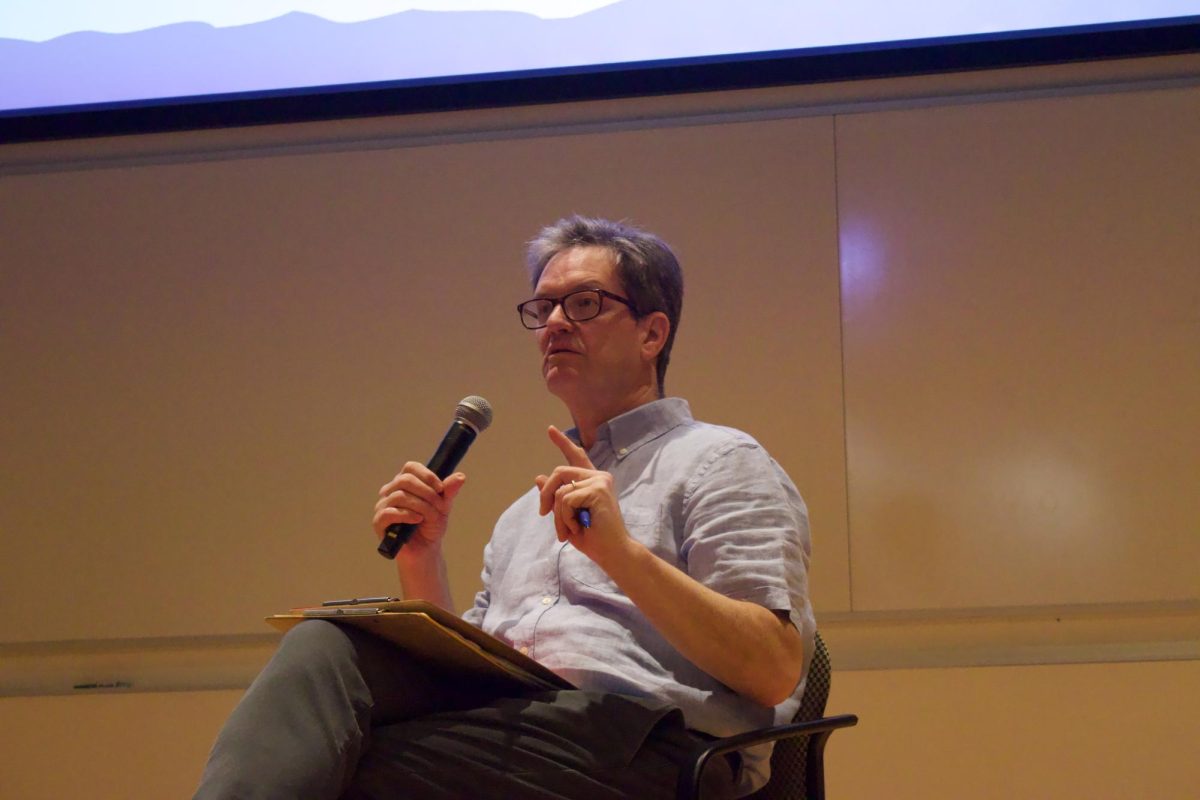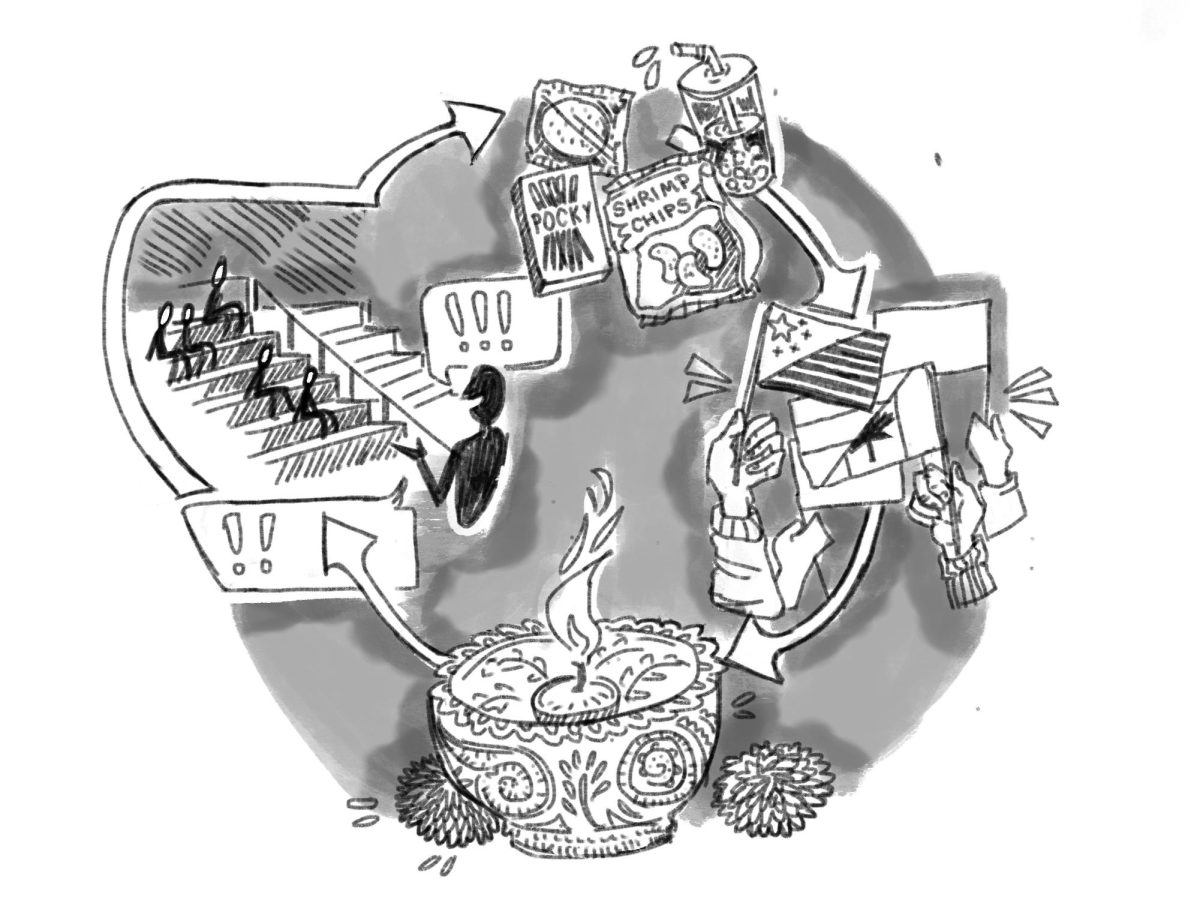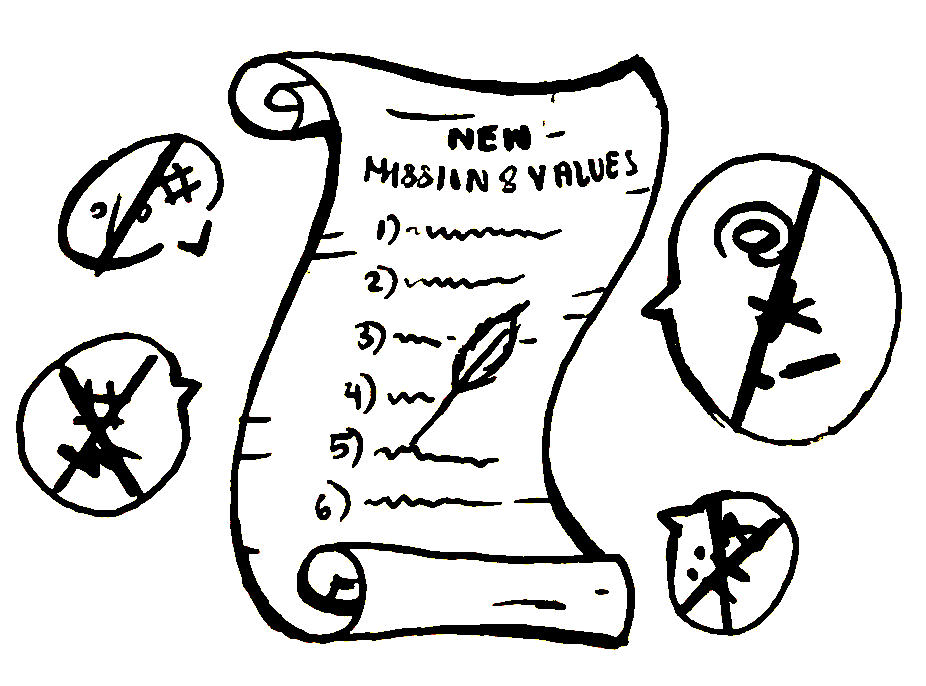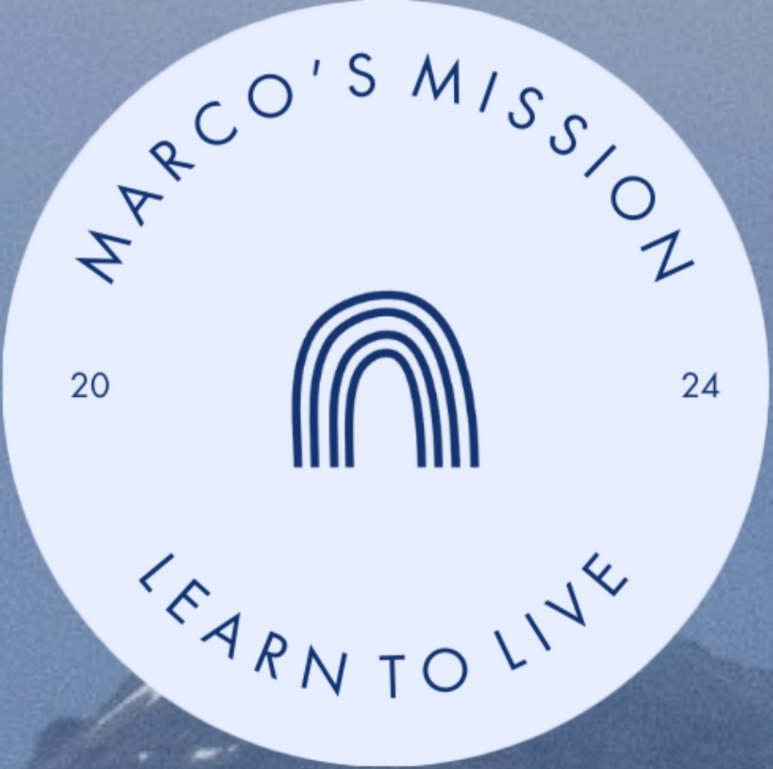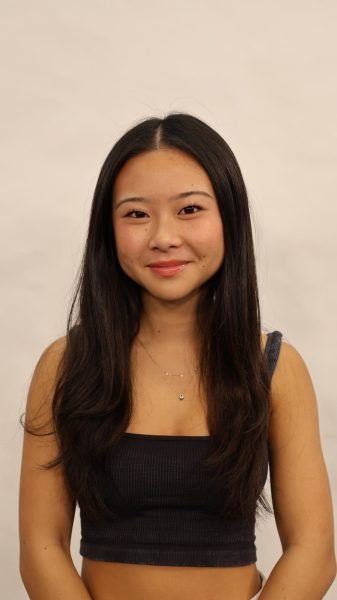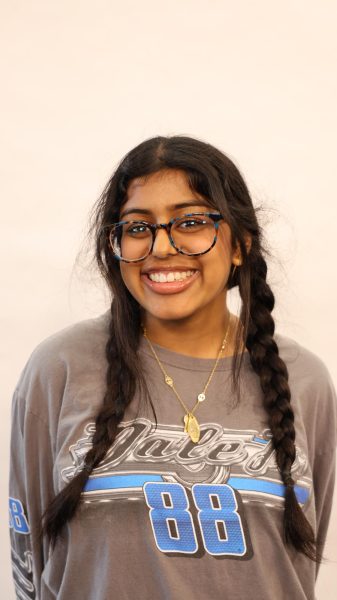From installing new cameras in the parking lot to air conditioning in classrooms, Menlo has been constantly expanding technology on campus over the past few years. One new advancement that might catch a visitor’s eye is the sight of students wandering aimlessly on the quad with blocky, white virtual reality headsets over their eyes.
It’s been an ongoing passion project for Menlo’s Educational Technology Lead Dayna Frank, who has been working on bringing virtual reality into classrooms ever since she arrived at the school in 2022.
“I wanted to bring VR to the classrooms because it could be engaging, it could be fun, it could still be learning, and it’s new,” Frank said. “We’re lucky at Menlo to have the resources to buy it.”
The school initially bought seven Oculus Quest 2 headsets but has since invested in 15 of them. Eventually, Frank hopes to upgrade to Oculus Quest 3 headsets or even potentially procure Apple Vision Pro headsets.
Menlo currently holds subscriptions to various educational software packages, primarily focused on science content. One teacher who has started incorporating VR into her classroom is science teacher Tanya Buxton. Frank and Buxton are working with a company called 10K Science to develop VR content that Buxton can use in her curriculum for Advanced Topics in Biology.
Teachers from outside of the science department have adopted this new technology as well, experimenting with virtual field trips, immersive simulations and more. History teacher Mathew Nelson has used VR in his In Gods We Trust history elective to take students to significant religious sites around the world.
The world languages department has started using VR as well — Advanced Topics in Spanish: Expression and Exploration (AT Spanish) students recently did a virtual tour of Frida Kahlo’s Casa Azul in Mexico City. Additionally, the Modern World History team is currently exploring using VR for fighter plane simulations to bring the realities of World War I to life. And last year, during MTerm, freshmen explored global agriculture and sustainability through VR, examining the impacts of genetically modified organisms and comparing farming practices worldwide. Looking forward, Frank plans to continue expanding VR use to more subjects, including math, which has been a difficult area to integrate technology into.
One of the major advantages of VR is the level of engagement it fosters. “The students are excited because it’s something different,” Frank said. “The more immersive experience, I think, makes the learning really come alive.” She added that many students who have not previously used VR have also enjoyed learning how to use the headsets and controllers.
However, incorporating VR into lessons has not been without its challenges. As a pilot program, the technology requires both teacher willingness and adaptability.
“There’s been some hiccups as far as how to troubleshoot the actual headsets, how to use the actual software,” Frank said. “But the teachers who are willing to try have been so flexible and gracious, and they have seen good rewards with just student engagement.”
So far, feedback from students about VR has been overwhelmingly positive, according to Frank. Students have been very interested in participating and using the VR headsets in their classes.
Junior Katie Kossow used the VR headsets in her AT Spanish class to look at Frida Kahlo’s Casa Azul. “I thought it was really engaging and cool to see the inside of the house but there were a few technical difficulties. It was upside down for a little which made me feel kind of nauseous,” Kossow said.
Frank plans to continue visiting department meetings and encouraging teachers to incorporate VR in creative ways. “My hope is to grow the program so that teachers know that we have this technology available and that we can see some kind of student growth,” Frank said. “Not only is it fun and engaging, but it’s actually enhancing the learning.”


